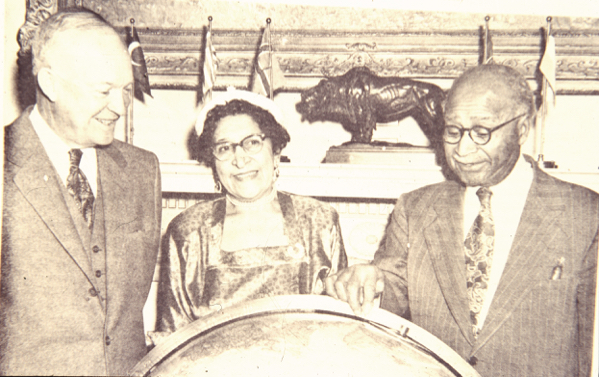The article starts by reminding us that one of the goals of the US-IGY oceanography program was a worldwide study of sea level in an effort to understand a seasonal cycle of mass deficiency between the northern and southern oceans. (These terms were general, although the Southern Ocean is now the 'newest' named ocean, recognized by the U.S. Board on Geographic Names as the body of water extending from the coast of Antarctica to the line of latitude at 60°S.)
The major objective of the IGY sea level program was to obtain more reliable measurements for the values of mean sea level. At that time there were about 500 tide gauges around the world. Distribution of these stations was uneven, so more than 200 new stations were established for the IGY as part of the Island Observatory Program, with an emphasis on island stations and the southern hemisphere coastlines.
So many stations are useful because sea level rise has a global and a local component, as pointed out here by NOAA, so the geographically diverse measurements can be used to disentangle those effects.
The article mentions that a complication for the station in Grindavik, Iceland, was the 12 foot variation in daily sea level due to the tides, similar to the infamous 50' tidal variation for the Bay of Fundy. Wow, I didn't realize I was so close to there when I went to Acadia National Park in September.
Th tidal gauge record from Reykjavik, Iceland (below) below is graphed from the IGY era to the present, showing the linear trend of 2.35 mm/year as well as monthly fluctuations.
 |
| Reykjavik tidal gauge for the last 40 years |
This NOAA map shows the distribution of tide gauges around the U.S. These each record local relative sea level (RSL) trends, a combination of "eustatic" (global) sea level rise and the local vertical land motion. The global sea level trend has been recorded by satellite altimeters since 1992. Global sea level rose at a rate of about 1.7 mm/year during the 20th century (NOAA), but 3 mm/year since 1992 (NOAA). This latter rate would lead to an additional increase of 10" by the end of this century.
The tides are due to the gravitational attractions of the Moon and Sun, the former being twice as great as the latter due to the Moon's closer distance to Earth. NASA explains the tides with some helpful animations. Not only is sea level affected by tides with a diurnal or semi-diurnal (or mixed) periodicity as the Earth rotates beneath the Moon, but so is the solid Earth.






































